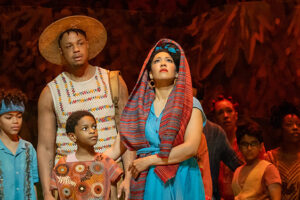

I also have something in common with Hector Berlioz: neither of us, as adults, have religious beliefs, but adore and respect the musical traditions in which we were emerged as children.
Berlioz’s tril ogie sacrée actually began as a joke when, in 1850, he composed “L’adieu des bergers,” the piece which would eventually become the most famous section of the oratorio. Conceived for organ, he presented it to a friend as a work by an unknown 17th Century composer named Ducré. Its immediate success in a choral setting – even among his frequent detractors – prompted him to compose the complete work which premiered in Paris in 1854.
L’enfance du Christ is in three sections which together relate the story of the Holy Family’s flight into Egypt: Le songe d’Hérode (Herod’s Dream), La fuite en Egypte (The Flight to Egypt) which features “L’adieu des bergers,” and L’arrivée à Saïs (The Arrival at Sais).
Unlike the reception of the majority of Berlioz’s works being decreed bizarre and discordant, it became an immediate success to the press and public, leading the composer to write in his Memoris, “The subject naturally lent itself to a gentle and simple style of music, and for that reason alone was more in accordance with their taste and intelligence. Time would probably have developed these qualities, but I should have written L’enfance du Christ in the same manner 20 years ago.”























Comments